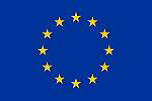Expectations regarding (big) data and the opportunities it offers are growing thanks to increased data-processing capacities and the proliferation of digital information. However, questions of where the data stems from, what information it contains, how it is processed, and what interpretations are drawn from the outcomes of the calculations remain relevant.
We started our journey of developing an intelligent decision support system (IDSS) by first identifying data that contains information on individual adult learners, their vulnerable life conditions, adult education (AE) provision, and national AE policies. First, we searched for statistics and numeric microdata for different European countries. Second, we sought to uncover good AE practices that would yield the secrets of their success through participant, practitioner, and policy-maker interviews. Retrospectively, one can say that this was not an easy task.
During the project, we collected data that was both quantitative (statistics, survey microdata, and register data), and qualitative (interviews, documents, research reports). Like many actors before us, we battled with the profound difficulties of bridging the worlds of quantity and quality. Nevertheless, this bridging is vital for a well-functioning IDSS. The data had to contain information on the issues that we are interested in: vulnerable youth, adult education provision, and active participation in society. These are complex phenomena with great local variation and numerous definitions.
What are numbers?
In the social sciences, numbers are seldom pure mathematical devices. They are used for referring to information that is initially in some other form. This information is converted to numerical form to allow calculation, commensuration, and comparability. Numbers are used to present physical phenomena, such as temperature and pressure, but also to describe social phenomena, such as educational attainment or attendance. In the societal context, numbers are often in the form of statistics, which are widely used to inform decision makers about the issues at hand. In other words, numbers are used to mirror and manage society. As such, numbers are never good or bad; they can be used for enhancing emancipation or oppression, as famously suggested by Alan Desrosières.
What about qualitative data?
Research interviews contain information about the studied issues as they are narrated to the researcher. We have asked policy makers, educators, and youths in different European countries questions about vulnerability, adult education, and active participatory citizenship. Those interviews were then recorded, transcribed, and coded, not using numbers, but by qualitative categories, such as “life stories” or “descriptions of vulnerability”. Theoretically, the coding process could have gone on as far as ascribing numeric values to the contents of those qualitative categories. However, this sort of process entails deciding, choosing, interpreting, and refining to make issues seemingly commensurate.
Numbers and/or narratives?
As numbers can refer to both physical and societal phenomena, narratives are in turn needed to explain the content of the numbers we use. The patterns of algorithms need narratives of lived realities to be interpreted to the benefit of vulnerable individuals. In a complex societal environment where situations of vulnerability, adult education provision, and societal conditions vary and active participatory citizenship is being defined, the task can be solved only with the help of both numbers and narratives.
Paula Kuusipalo & Jaakko Hyytiä
Sources:
Decision Support Systems Review – Working Paper from the EduMAP project: https://projects.tuni.fi/edumap/2017/03/23/decision-support-systems-review-working-paper-from-the-edumap-project/
Alain Desrosières (2015). Retroaction: how indicators feed back onto quantified actors. In: R. Rottenburg, S.E. Merry, S-J. Park, & J. Mugler (eds). The World of Indicators: The Making of Governmental Knowledge through Quantification (Cambridge: Cambridge University Press), pp. 329–353.



Comments